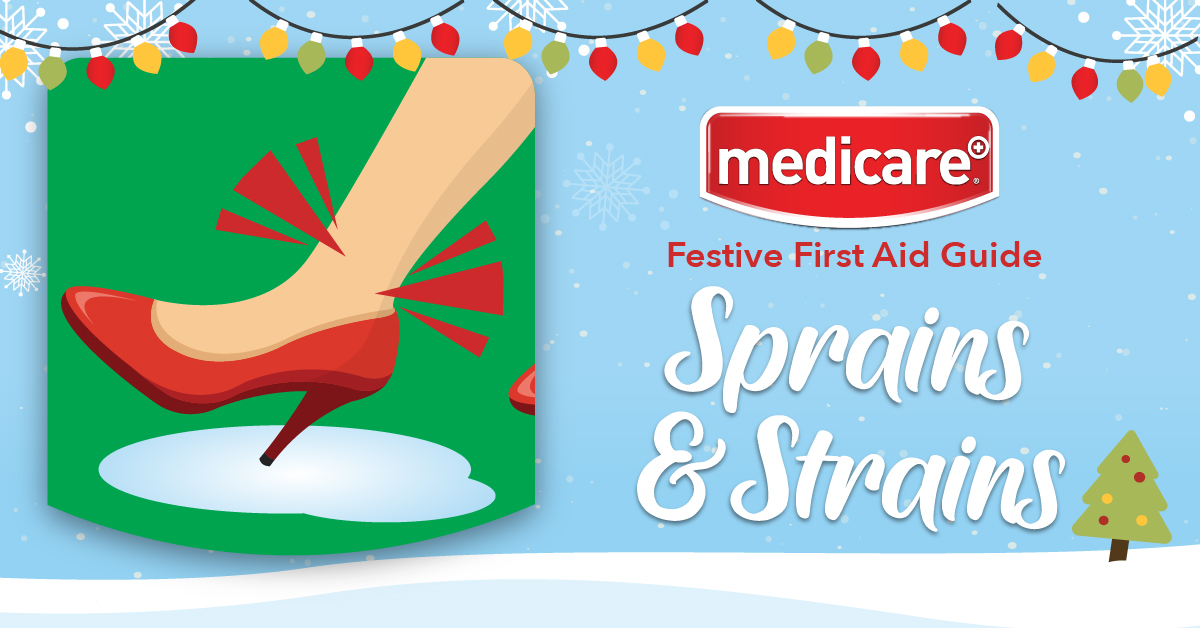Headlines
- Advanced Footcare Solutions: Use Cases Explained
- Keeping Customers Covered: How Pharmacies can address the Summer Burn Surge - A clinical and practical guide for pharmacy teams
- Fleming Medical Achieves ISO 13485 Certification – Reinforcing Our Commitment to Patient Safety and Quality
- Gentle Daily Ear Care with Medicare Ear Spray
- Breathe Easy with Medicare Nasal Spray
The 12 Injuries of Christmas - Sprains and Strains
28 November 2019

A sprain is a muscle, ligament or tendon that has been twisted or torn, while a strain is a muscle that has been overstretched and partially torn. Both injuries can cause mild or severe pain but can usually be treated at home.
What causes a sprain or strain?
Sprains are most commonly acquired through sports or exercising, primarily when your muscles are tired or you have failed to warm up beforehand. The muscles will become overstretched, meaning that any sudden movements can lead to a tear.
Simply changing direction too quickly or falling in an awkward position can lead to a sprain or strain, other festive injuries could include icy/slippery footpaths, wet kitchen floors and those dreaded high heels shoes!
Treating a sprain
The main indicators that you have sustained a sprain or strain is tenderness or weakness of the injured area, along with potential swelling or bruising.
Remembering the RICE acronym is essential when you experience a sprain or strain as this will help you to make a full recovery and avoid any further damage.
Rest – Stop any exercise that you are doing and refrain from putting any weight on the injured area, advisably for 24-48 hours.
Ice – Apply a Medicare Instant Ice Pack to the injury for 20 minutes every 2-3 hours which will assist in reducing the pain and swelling.
Compression – Wrap a Mediform bandage around the sprain or strain to give extra support.
Elevate – Keep the injury raised above the level of your heart, to decrease pain and throbbing. You can do this by propping the injured area on a pillow.
After 2 weeks, most sprains will start to feel better. Strenuous exercise should be avoided for up to 8 weeks after your sprain injury. If your strain or sprain has not healed within this time-scale, then you may be recommended for physiotherapy to help your injury return to its normal state.

 Fleming Medical UK
Fleming Medical UK
